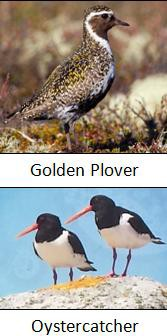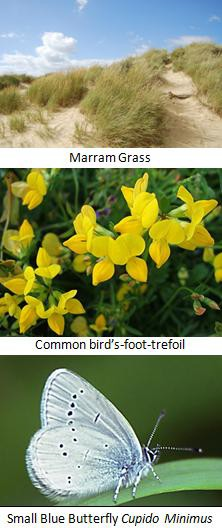2. Environment and Wildlife
2.1 Natura 2000 Sites
There are 2 No. SPA’s Special Protection Area (SPA) and 1 No. Special Area of Conservation (SAC) located on the Laytown, Bettystown and Mornington Beach. This includes the following;
- Boyne Estuary SPA;
- Boyne Coast and Estuary SAC; and
- River Nanny Estuary and shore
|
Figure 2.1: Boyne Estuary SPA & Boyne Coast and Estuary SAC (© NPWS) |
Figure 2.2: Boyne Coast and Estuary SAC & River Nanny Estuary and shore SPA (© NPWS) |
 |
|
2.1.1 Boyne Estuary Special Protection Area (SPA) and River Nanny Estuary and shore SPA
The Boyne Estuary Special Protection Area (SPA) and River Nanny Estuary and shore SPA have been designated Special Protection Areas under the EU Birds Directive (79/409/EEC). The Boyne Estuary supports nationally important numbers of many wintering birds including Shelduck, Golden Plover, Lapwing, Black-tailed Godwit, Redshank, Turnstone, Oystercatcher, Grey Plover and Sanderling.
Many water birds are winter visitors to Ireland's shores. They migrate here over thousands of kilometres from their breeding grounds further north. Light bellied Brent Geese and Knot are two such species that fly south over the winter period to less harsh environments where food is more readily available.
Estuaries provide rich habitats for many wildlife species and have an abundance of invertebrates (animals without backbones) such as worms, snails and crustaceans that provide food for bird communities. The Boyne Estuary supports intertidal mudflats and saltmarsh habitats. These are important areas where flocks of birds gather to feed and roost.
2.1.2 Boyne Coast and Estuary Special Area of Conservation

The Boyne Coast and Estuary is designated a Special Area of Conservation (SAC). The Boyne Coast and Estuary SAC includes most of the tidal sections of the River Boyne, intertidal sand and mud flats, salt marshes, marginal grassland, and the stretch of coast from Bettystown to Termonfeckin that includes the Mornington and Baltray sand dune systems.
The Boyne Coast and Estuary SAC is a coastal site that supports a high diversity of habitats. A total of eight habitat types seen here including the estuary, tidal mudflats, embryonic shifting dunes, marram dunes, fixed dunes, Salicornia mud, and both Atlantic and Mediterranean salt meadow are protected under Annex 1 of the European Union Habitats Directive because they are rare and at risk of being lost or damaged.
2.2 Sand Dunes
Dunes are dynamic ecosystems that support an array of plant, bird and animal life. Marram grass is the main dune building species. It helps bind loose, windblown sand into ridges and dunes. This allows other plant species to begin to take root and grow. The more stable areas of dunes support a high diversity of plant species including common bird’s-foot-trefoil, wild thyme, lady’s bedstraw and wild pansy along with a variety of grasses, mosses and lichens. Many of these species are important food sources for butterflies and bees that live on the sand dunes.
Although created and shaped by natural processes, sand dunes require conservation measures to protect them from erosion caused by human activity. Public use and trampling by horses can wear away grass cover on the dunes  allowing the wind to further erode the fragile dune system. If this continues much of the existing sand dunes will disappear along with the wonderful plant and animal life they support.
allowing the wind to further erode the fragile dune system. If this continues much of the existing sand dunes will disappear along with the wonderful plant and animal life they support.
The dune system in Bettystown is National Parks and Wildlife System protected but most are in private ownership. During periods of very good weather, reports have been received of anti-social behaviour particularly in the vicinity of the dunes.
The installation of a timber boardwalk through the dune system was completed in 2014. It was installed to minimise the paths through the dune system by encouraging the use of this designated path to the beach thereby assisting in the protection of the dune system.
2.2.1 NPWS Ranger Contact details
The National Parks and Wildlife Service (NPWS), contact details is National Parks and Wildlife Service, Government Buildings, Kilcarn, Navan, Co. Meath Tel: 076-1002634.
2.2.2 Wildlife Monitoring
The NPWS undertake a number of regular surveys of wildlife on Laytown, Bettystown and Mornington Beach including:
- Marine biotape classification
- Saltmarsh
Historical research and monitoring information is also available for the following:
- Skate population
- Dog whelks
For further information on any of these please contact the Senior NPWS Ranger and/or MCC heritage officer.